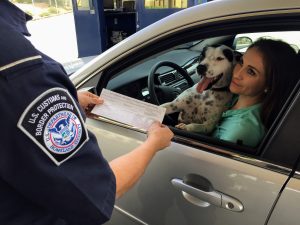Much of the world looks at the US educational system with admiration – particularly the university system. Many parents dream of sending their children to the United States to get an education. But in addition to the costs involved, there are a number of hurdles that must be cleared in order for the student to legally immigrate. A student visa is almost always required – and in this blog entry, we’re going to break down the basics.
It’s possible to take short, non-degree classes on a visitor (B) visa, but for a longer program of study, a student visa is required. The two most common types of student visas are the F visa and the M visa. The F visa is for studying at an academic institution, such as a university or college. An M visa is for attending a non-academic school, such as a vocational training program.
Before applying for a student visa, you must be accepted by a Student and Exchange Visitor Program (SEVP)-approved school. Some schools will require that you pass a test demonstrating English language proficiency, such as the TOEFL. A few schools provide English instruction during the summer, but in most cases your English needs to be fairly good in order to qualify for a visa.
After a school accepts you, you’re enrolled in the Student and Exchange Visitor Information System (SEVIS). There’s a fee for enrollment that you must pay before applying for a visa.
If you’re an F-1 student, one of the requirements is that you study full time. It’s acceptable to study for only a semester in the US as long as the study is full time. For a university undergraduate, full time would mean a course load of at least 12 credit hours.
The school where you intend to study will provide you with Form I-20, which is the form you take to your local US embassy or consulate when applying for a visa. When you apply, you may be required to again demonstrate that you speak English well enough to study in the US. You’ll also need to demonstrate to the interviewer that you don’t intend to stay in the US after you complete your studies.
You’ll be expected to prove that you have enough money to pay for your proposed course of study. If you have a spouse and children, you’ll need to show that you have enough money to support them, too, during your studies. If you’re planning on studying for four years you don’t need to have the money for all four years to begin with, but you have to have a reasonable plan for coming up with the money within the allotted timeframe. Funding sources can include support from other family members, scholarships, and savings.
Additional items to consider during this process: You should arrive in the US no more than 30 days before your classes start. You need to have your Form I-20, proof that you’ve paid the SEVIS I-901 fee, proof that you can pay for your schooling, and some kind of valid proof of citizenship and identification, such as a passport.
Yes, the process of acquiring a student visa can appear overwhelming. But if you or a loved one are dreaming of studying in the United States, we can help. Contact us today to learn more!







